The tour boat we climbed into was moored in a canal called the Rokin. The
Rokin canal is the now-underwhelming last stretch of the River Amstel. At one
time it extended to the dam located at Dam Square, but the last part was filled
in and turned into a street (also called Rokin) in 1936.
Reederij P. Kooij Boat Tour Landing, Rokin Location
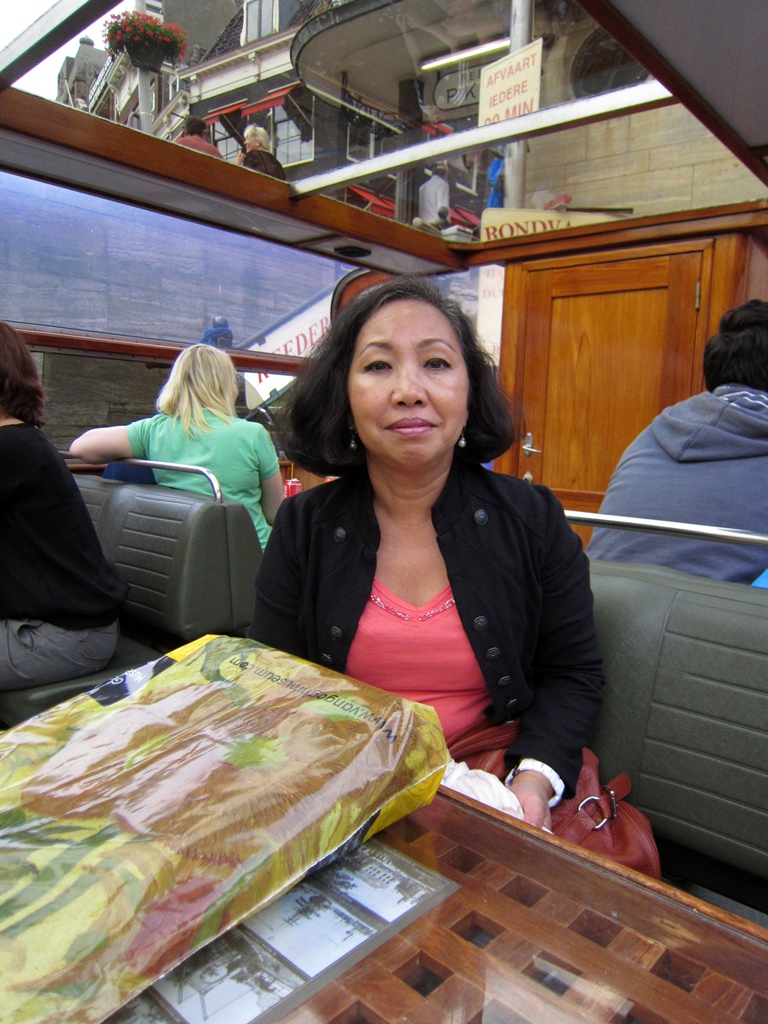
Nella on Tour Boat
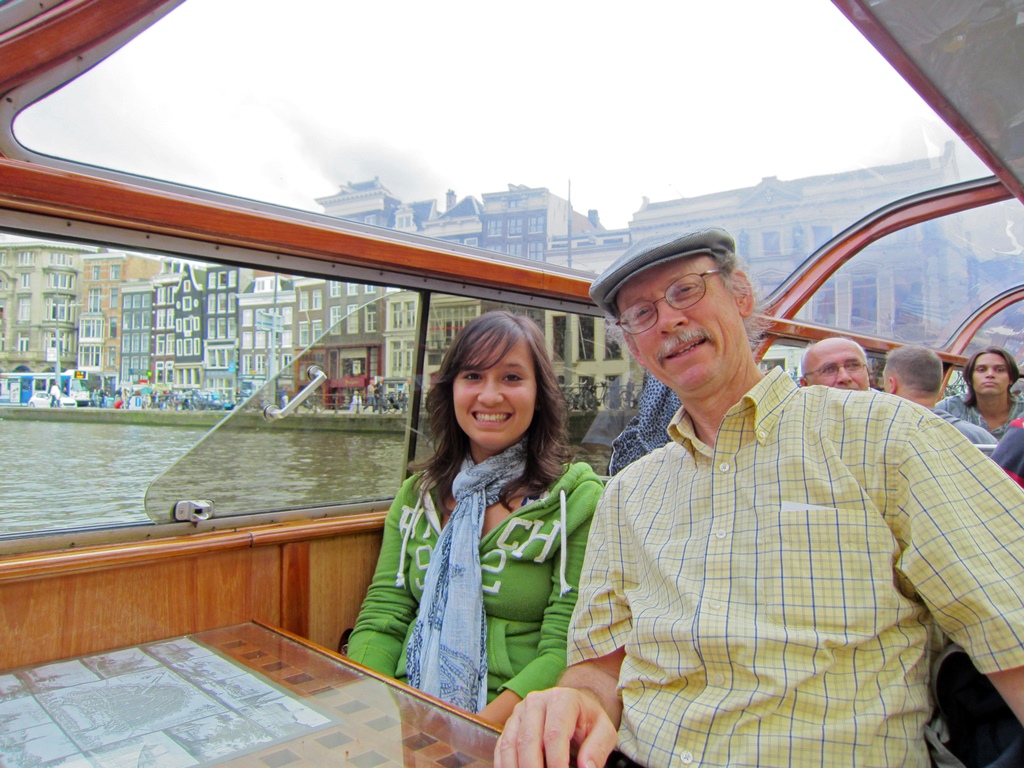
Connie and Bob on Tour Boat
The tour featured a pre-recorded multilingual narration, and began by turning
into the Amstel proper and passing some notable buildings. There were low
bridges on the river and on canals feeding into the river, but the boat was
even lower, easily passing under the bridges that were encountered along the
route.
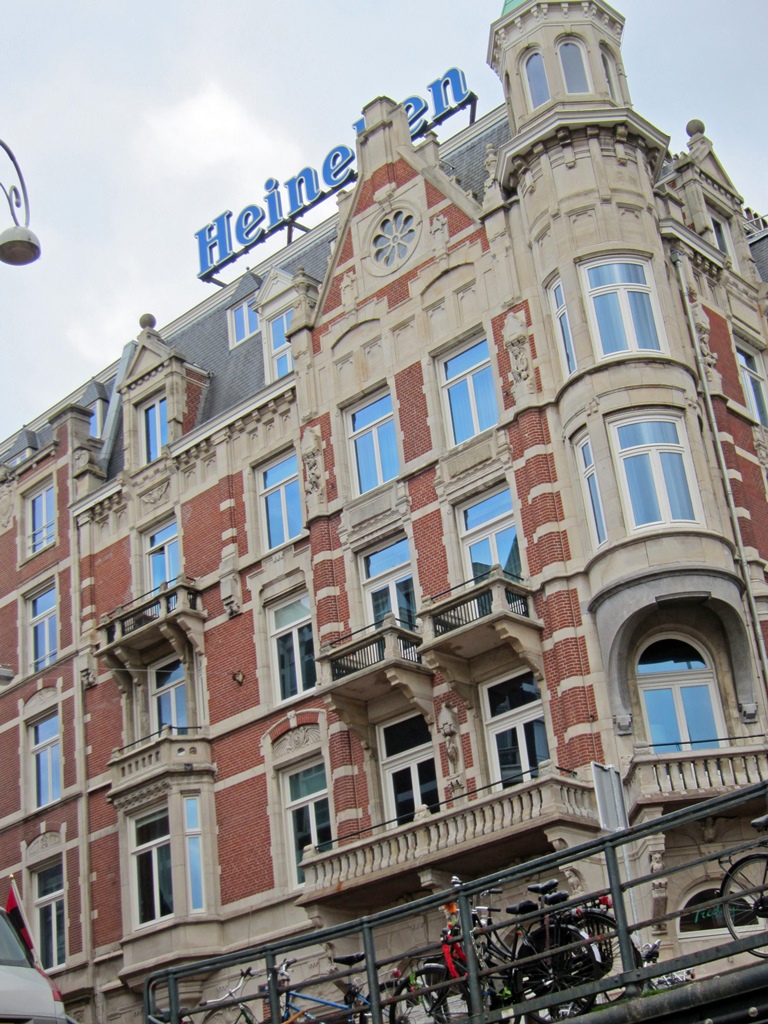
Hotel de l'Europe

Hotel de l'Europe
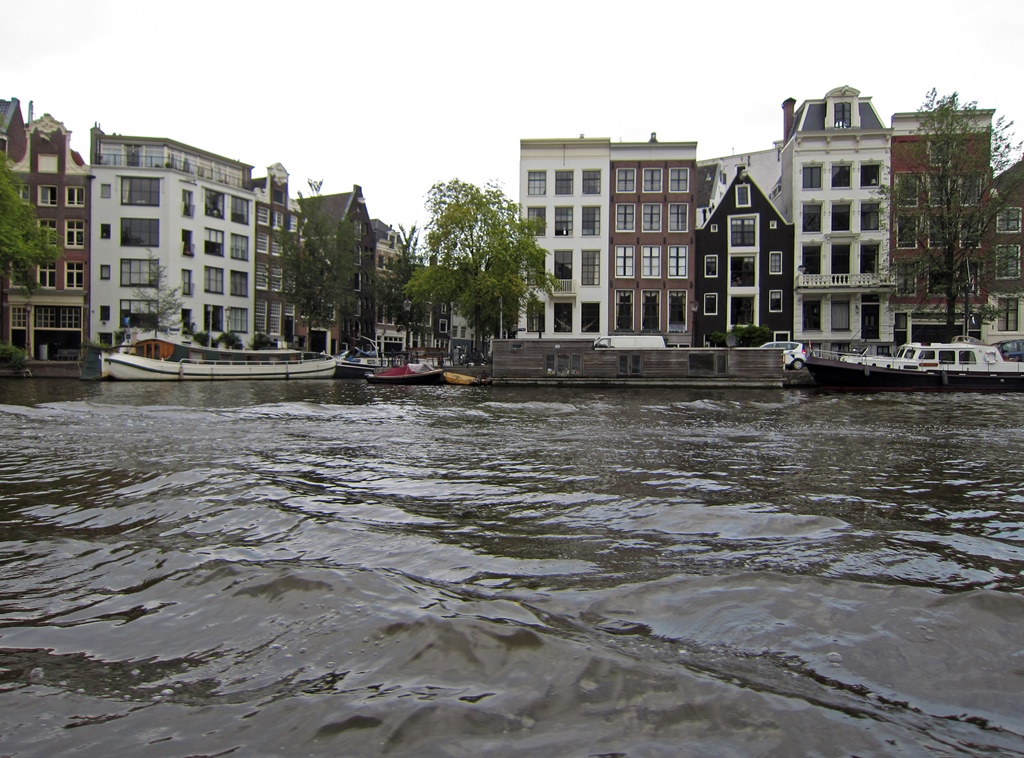
Buildings Along Amstel

Approaching National Opera and Ballet Building
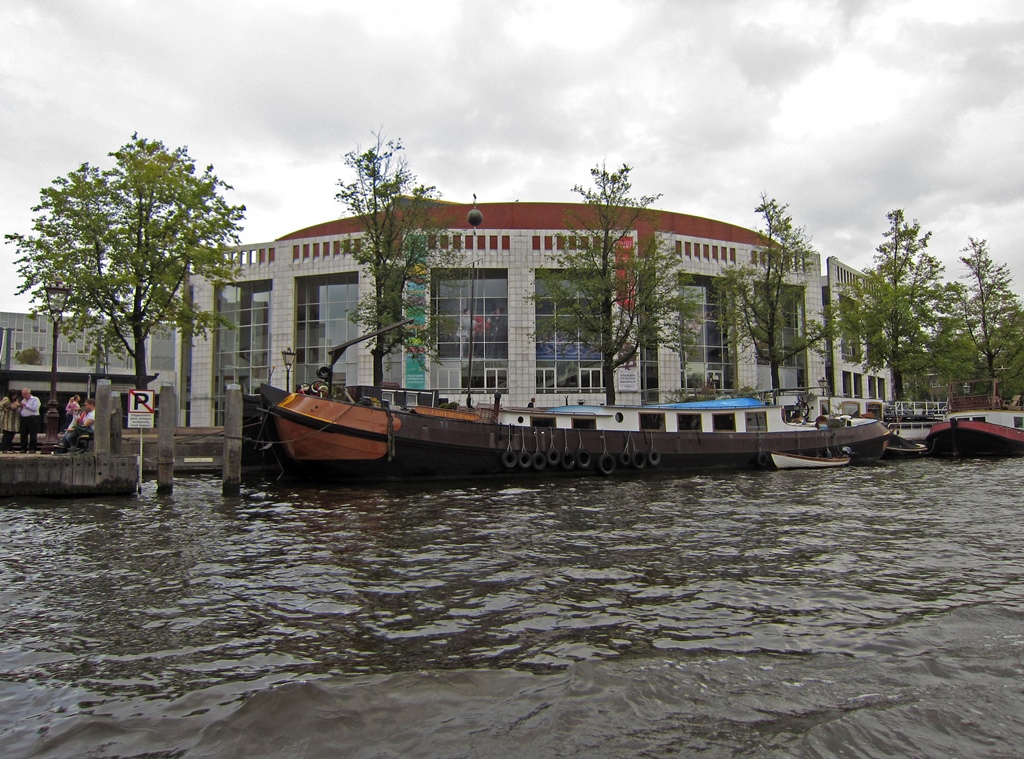
National Opera and Ballet Building

Passing the National Opera and Ballet Building

Passing the Walter Suskind Bridge
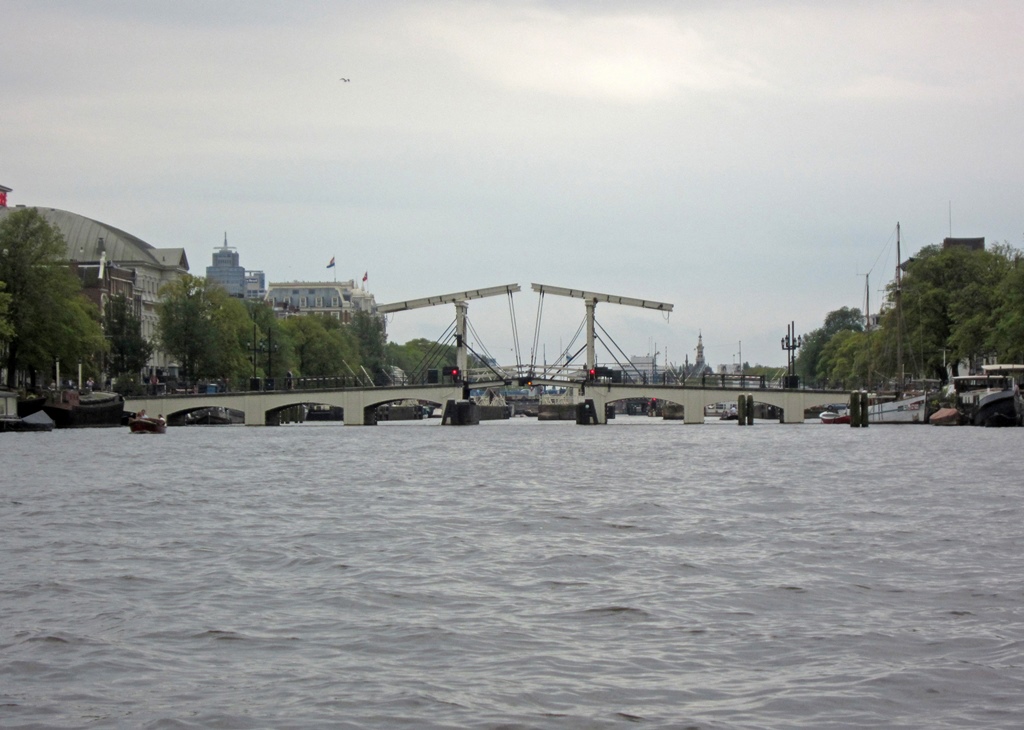
Magere Brug ("Skinny Bridge")
Before reaching the Magere Brug, or "Skinny Bridge", the boat took a right
turn into one of the main canals, the Herengracht. The Herengracht is one of
the concentric canals surrounding the city center, and as we traversed most of its
length we passed several intersecting canals. At the end of the Herengracht we cut
over to one of the other main canals, the Singel, which feeds directly into
the IJ. On the Singel there is a lock called the Nieuwe Haarlemmersluis,
dating from the 17th Century, which is used to maintain the water level of the canal
while providing a means for boats to pass through to the IJ. We passed right
through, as the canal level and the tidally-influenced IJ level were apparently the
same.

Reguliersgracht from Herengracht
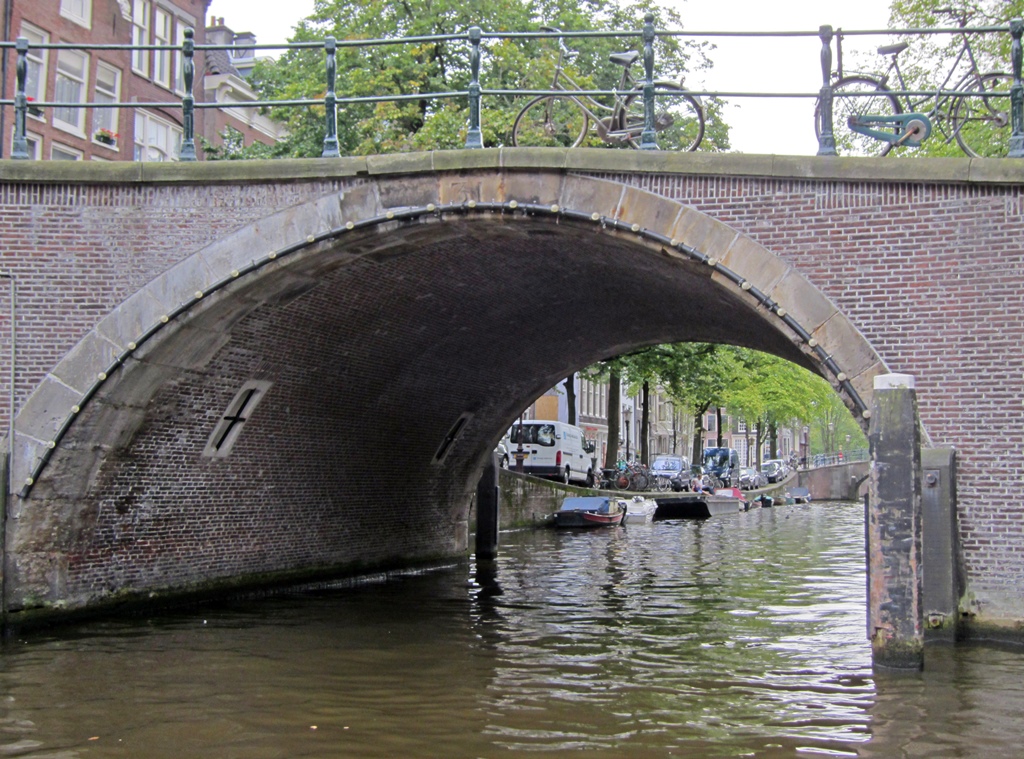
Archway to Reguliersgracht
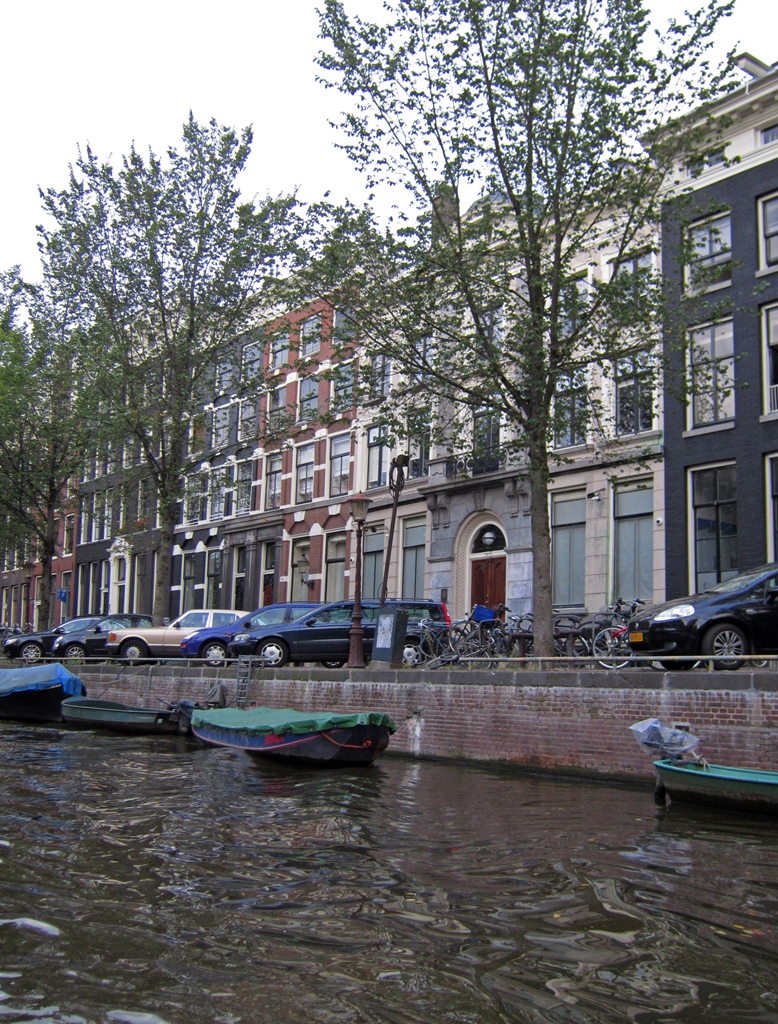
Buildings Along Herengracht
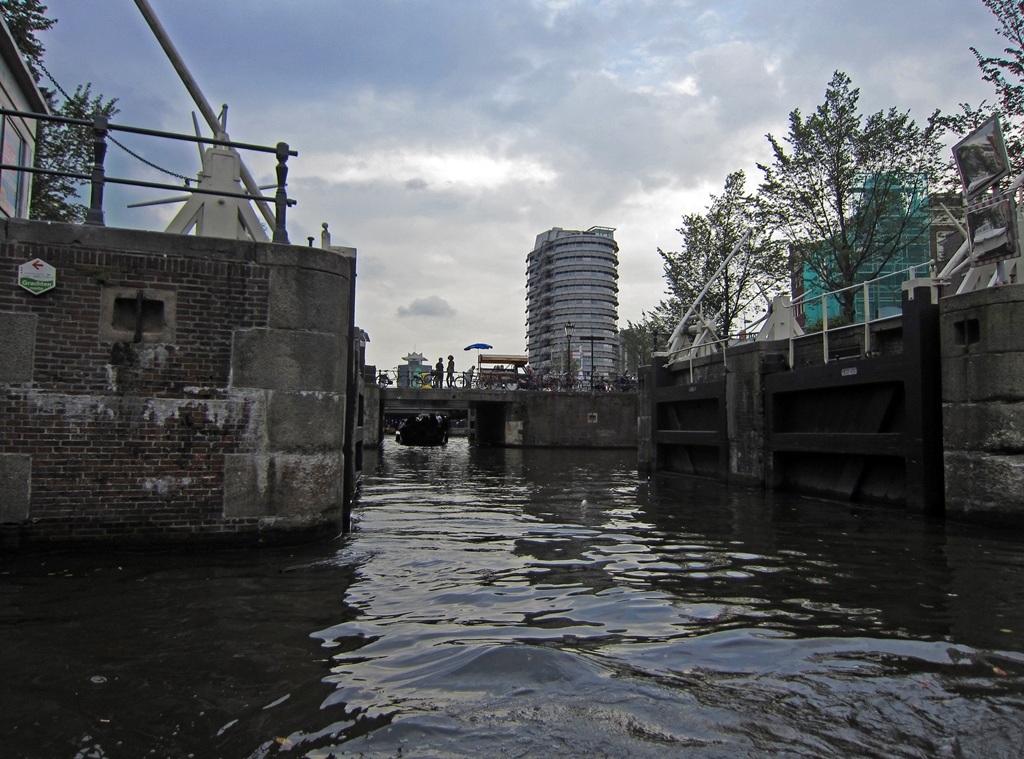
Nieuwe Haarlemmersluis (lock)
After passing through the lock, we passed under a couple of bridges that carried
trains (on tracks leading to the main train station) and auto traffic (on a
major road called De Ruijterkade), and then emerged into the IJ. On the
IJ we could see some of the usual activities one sees at a major harbor, plus some
buildings of note. Among these buildings were the EYE Film Institute, the A'DAM
Tower (a 22-story building mostly used by "creative" businesses), the train
station and the Muziekgebouw concert hall. There was a passenger terminal
for cruise ships next to the Muziekgebouw.

Passing Under Bridges into the IJ
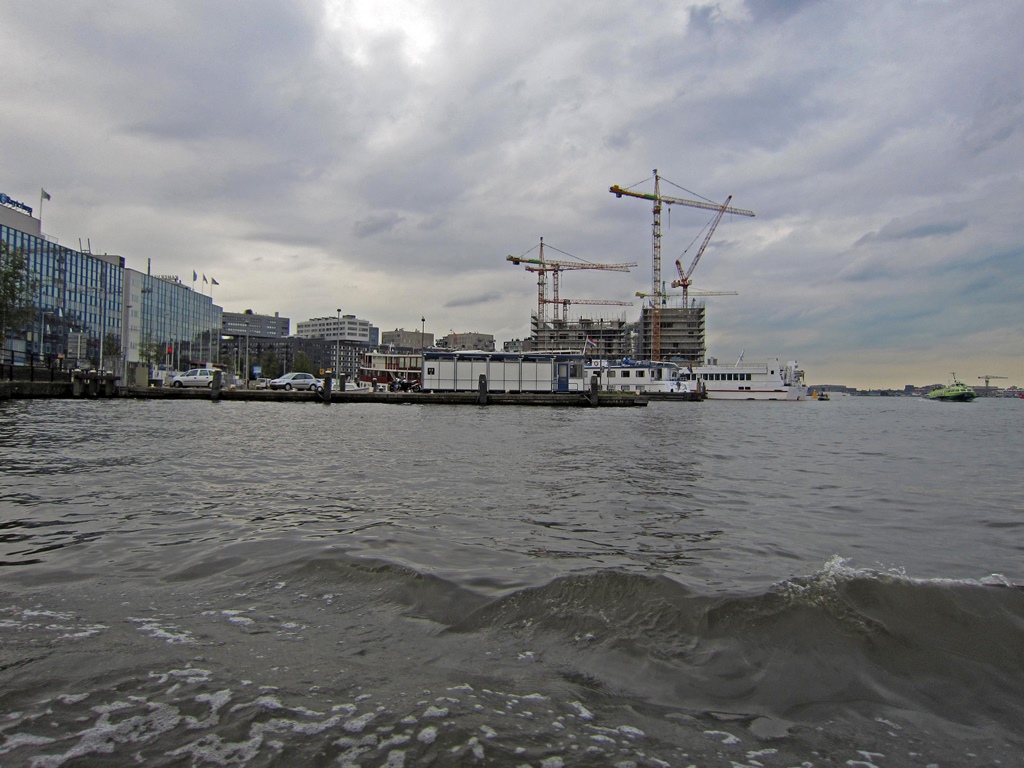
Construction on the IJ

Central Station, EYE and A'DAM Tower
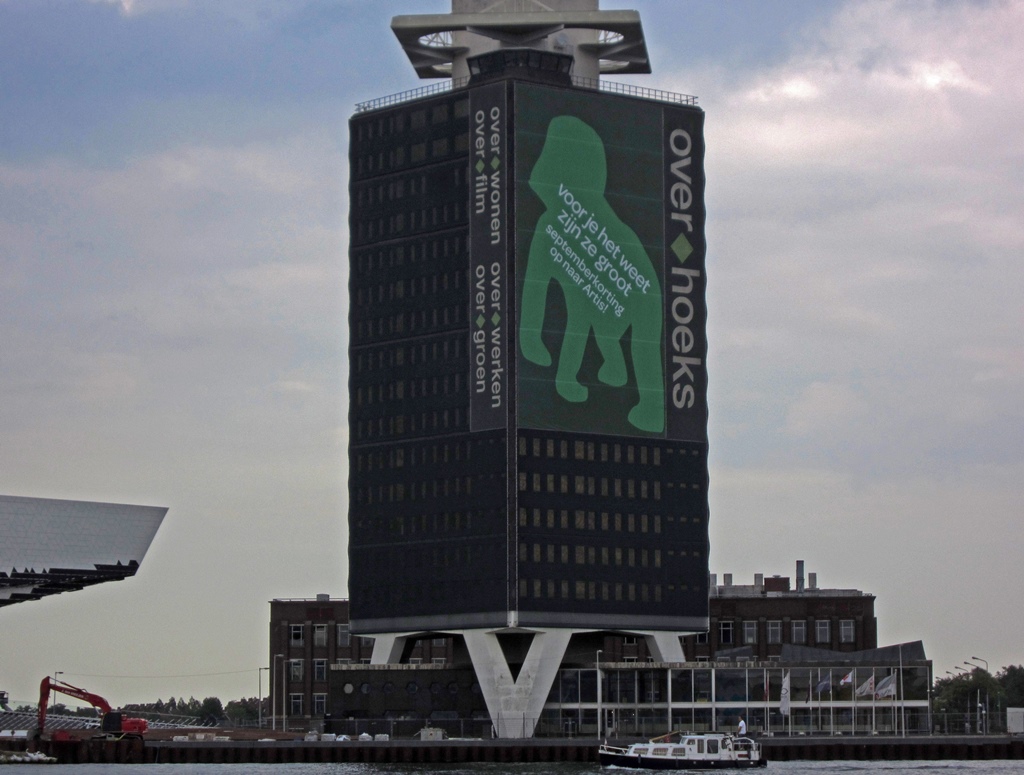
A'DAM Tower

Central Station, Church of St. Nicholas & Tour Boat

Boats, Connie and Muziekgebouw
We entered a small channel next to the Muziekgebouw which took us into a small
body of water called the Oosterdok, separated by an island from the IJ.
Located on the Oosterdok is a distinctive science center called NEMO, as well
as a picturesque floating Chinese restaurant called the Sea Palace. Moored
past NEMO we noticed a two-masted brigantine ship called the Wytske
Eelkje (apparently available for charter).
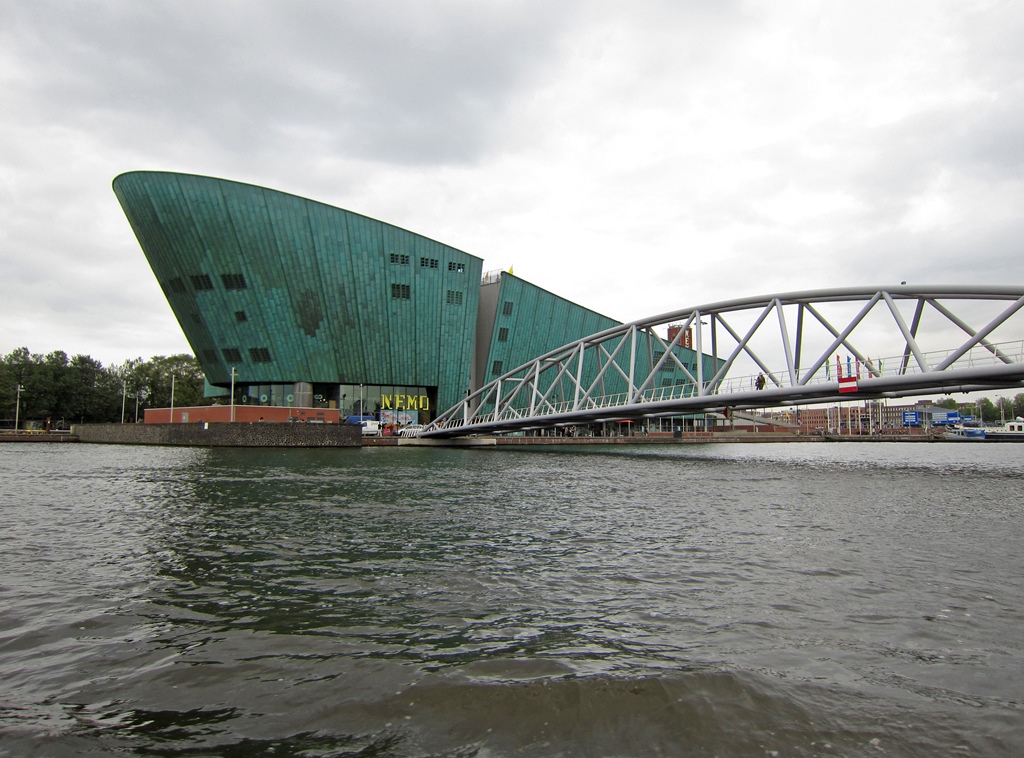
Science Center NEMO
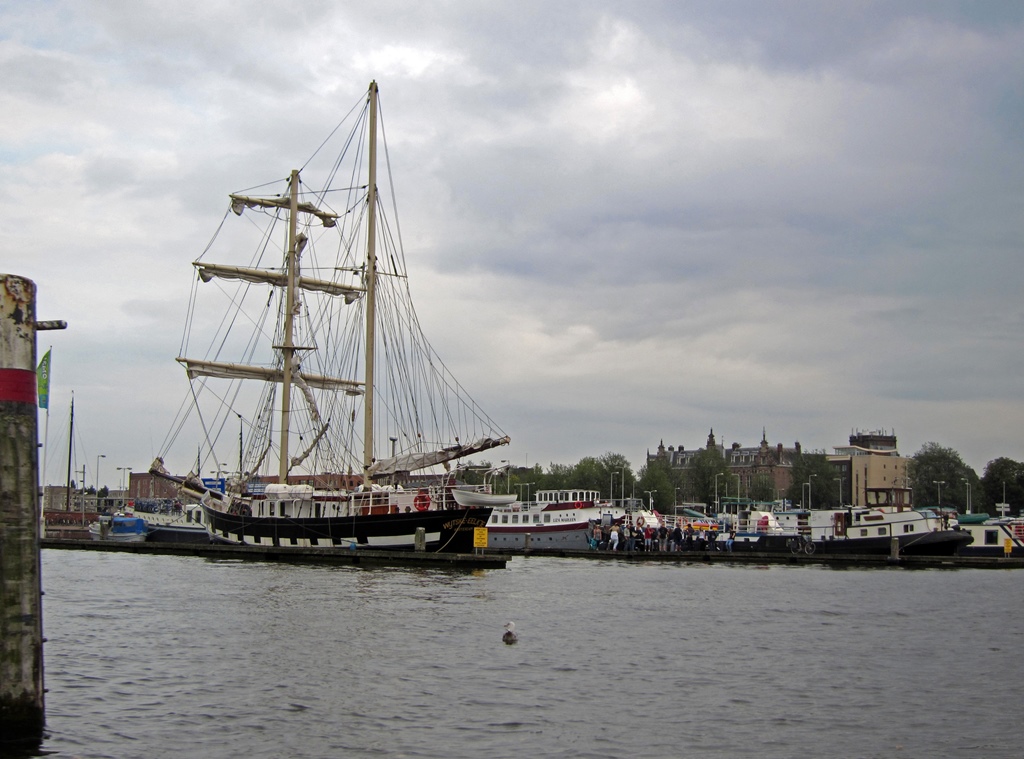
Wytske Eelkje Sailing Ship
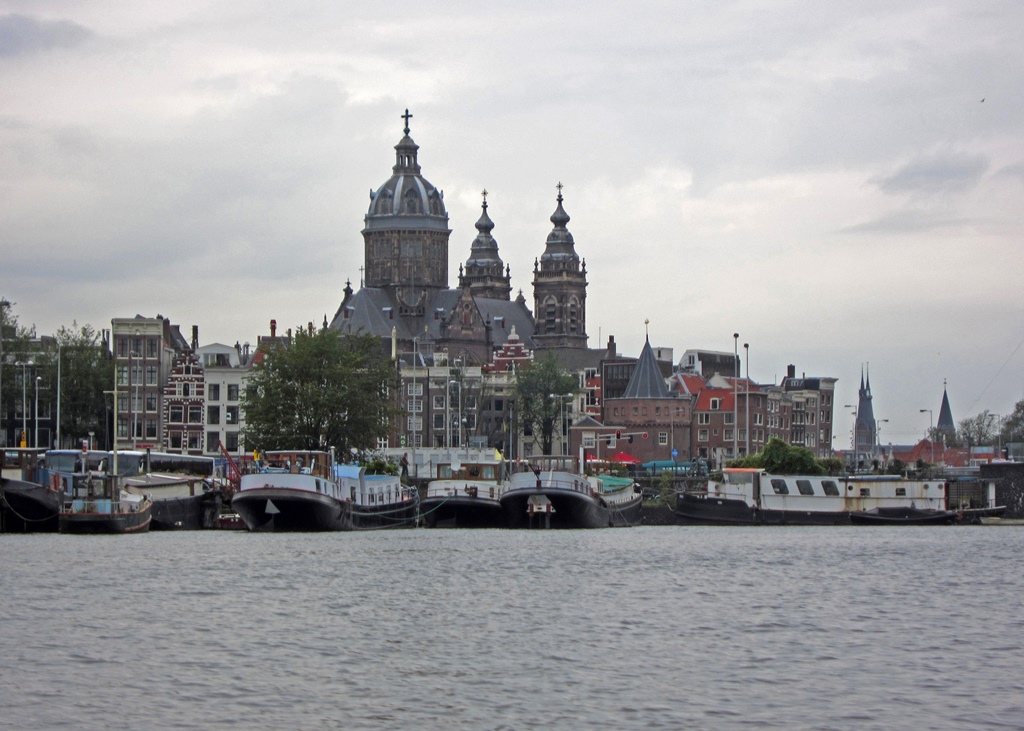
Church of St. Nicholas from Oosterdok
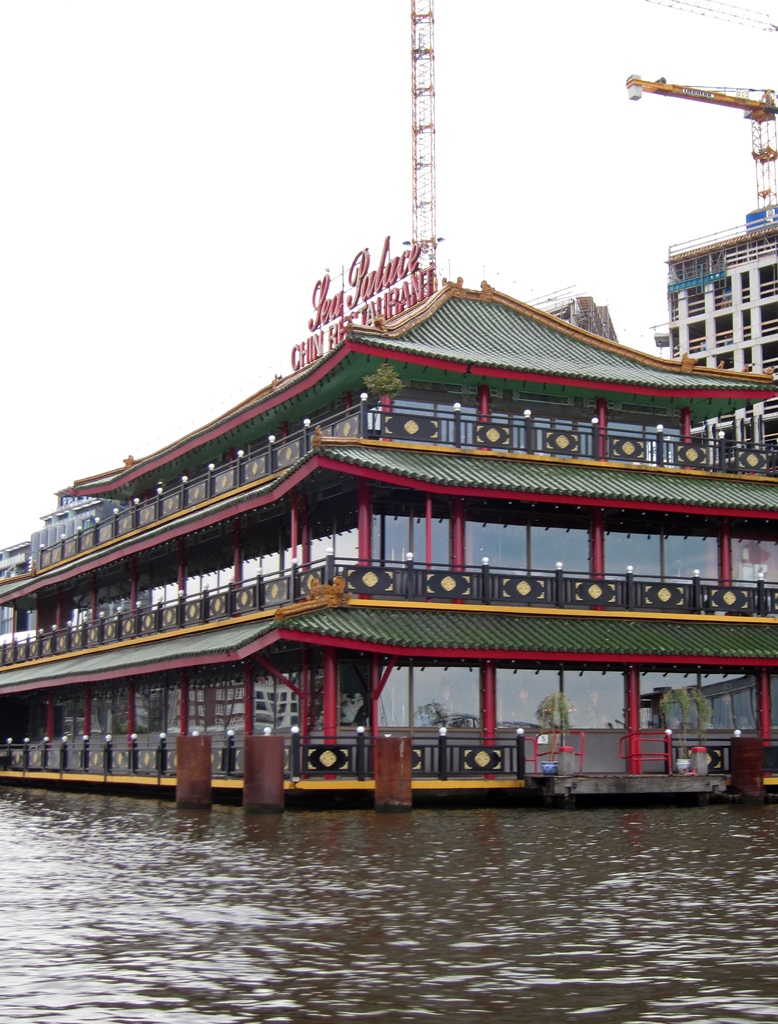
Sea Palace Chinese Restaurant
Beyond the Wytske Eelkje we entered a canal called the Oudeschans, which
took us back into the Amsterdam canal system. We made our way back to the
Amstel and returned to the Rokin landing, where we disembarked back to solid
ground.
Montelbaanstoren Tower on Oudeschans
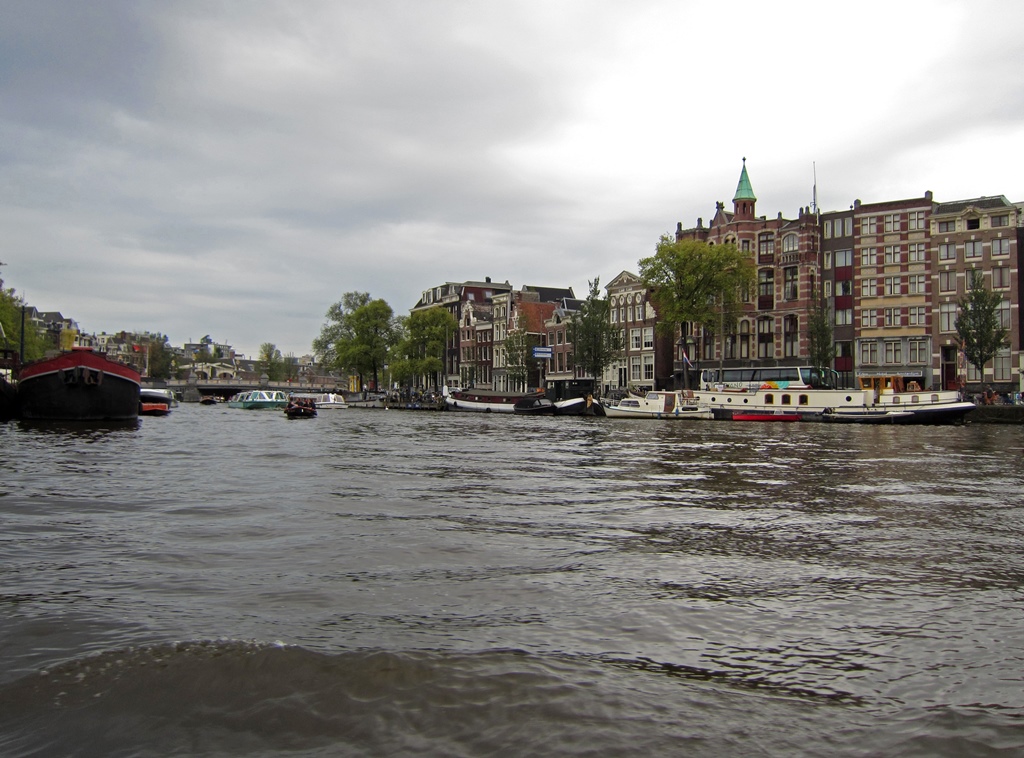
Back to Amstel River

Moored Boats and Munttoren Tower
By this time it was early evening, and it had been a busy day. We found
dinner and walked back to the hotel. The following day would be our last
full day in Amsterdam (and Europe) for this trip, and we had some plans.
First, we would look at some of the local churches.




























